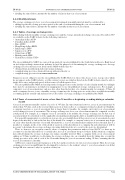Page 549 - SAIT Compendium 2016 Volume2
P. 549
IN 63 (2) Income Tax acT: InTeRPReTaTIon noTes IN 63 (2) • dividing the sum of those amounts by the number of days in that year of assessment.
4.2.2 Monthly intervals
The average exchange rate for a year of assessment determined at monthly intervals must be calculated by – • adding together the closing spot rates quoted at the end of each month during the year of assessment; and • dividing the sum of those amounts by the number of months in that year of assessment.
4.2.3 Tables of average exchange rates
Tables listing both the monthly average exchange rates and the average annualised exchange rates since December 2003 are available on the SARS website for the following currencies:
• Australian dollar (AUD)
• Canadian dollar (CAD)
• Euro (EUR)
• Hong Kong dollar (HKD) • Indian rupee (INR)
• Japanese yen (JPY)
• Swiss franc (CHF)
• British pound (GBP)
• United States dollar (USD)
The rates published by SARS are sourced from quarterly reports published by the South African Reserve Bank based on its foreign exchange transactions and may be used for purposes of determining the average exchange rate. Average exchange rates for currencies not listed on the SARS website may be –
• obtained from an authorised dealer in foreign exchange;
• compiled using spot rates obtained from an authorised dealer; or • compiled using spot rates from www.oanda.com.
Taxpayers are not obliged to use the rates published by SARS. However, those who choose to use average rates which do not appear on the SARS website, or if the currency is not one which is listed on the SARS website, must be able to justify those rates and provide proof of their source if called upon to do so.
The rates published by SARS are based upon the closing spot rates on the last day of each calendar month. Accordingly there may be circumstances in which it is inappropriate to use the published average exchange rates. For example, a company’s year of assessment may end on a date other than the last day of a calendar month, for example, 25 June. If such a company chooses to use a monthly average, it must use the closing spot rate on the dates on which its monthly accounting periods actually end and may not use the tables of average exchange rates published by SARS.
4.2.4 Years of assessment of more or less than 12 months or beginning or ending during a calendar month
A year of assessment normally consists of a cycle of 365 days. In some situations, however, a year of assessment may be shorter than 365 days, such as the year in which a person is born or dies or a company is formed or dissolved. Similarly, a company may have a year of assessment that is longer than 12 months, for example, in its rst year of assessment or if it changes its year of assessment. The average exchange rate for a year of assessment must be computed over the actual period. For example, if a company’s year of assessment is six months, the average exchange rate for that year of assessment must be calculated over the applicable six-month period using the daily or monthly intervals for thatperiod.
It is generally inappropriate to calculate an average rate on a monthly basis if the person’s year of assessment does not begin on the rst day or end on the last day of the month. For example, a company’s rst year of assessment may begin on a day other than the rst day of a month. Alternatively, a year of assessment may terminate before the nal day of a month, for example, in the event of the death of a person or the dissolution of a company. In such situations it will be necessary to determine the average exchange rate using daily intervals or to resort to the spot rate, ifpermitted.
There is, however, an exception, namely, when a company has permission under section 66(13C) to draw up its accounts to a day that falls short of, or extends after, its year of assessment by up to 10 days. In this situation a company may still determine the average exchange rate using a monthly interval. Thus a company with a year of assessment ending on 30 June would have to determine the average exchange rate on a monthly basis by taking into account the closing spot rates at the end of each of the 12 months during the year of assessment ending 30 June, assuming that the year of assessment is 12 months.
A PE is not a separate person for purposes of the Act and does not have its own year of assessment. Thus, the average exchange rate for a foreign PE must be determined by reference to the resident ‘owner’s’ year of assessment even if that foreign PE is in existence only for a portion of that year.
saIT comPendIum oF Tax LegIsLaTIon VoLume 2 541


